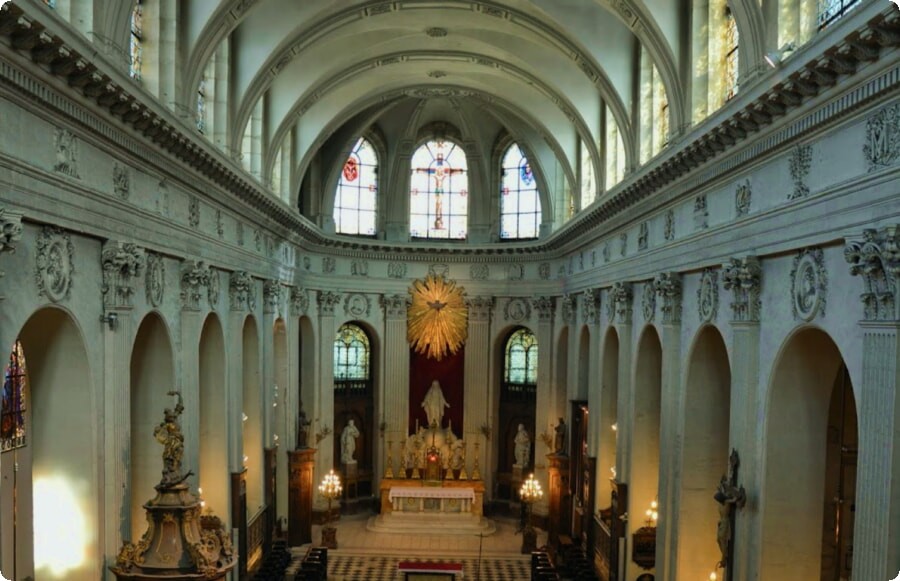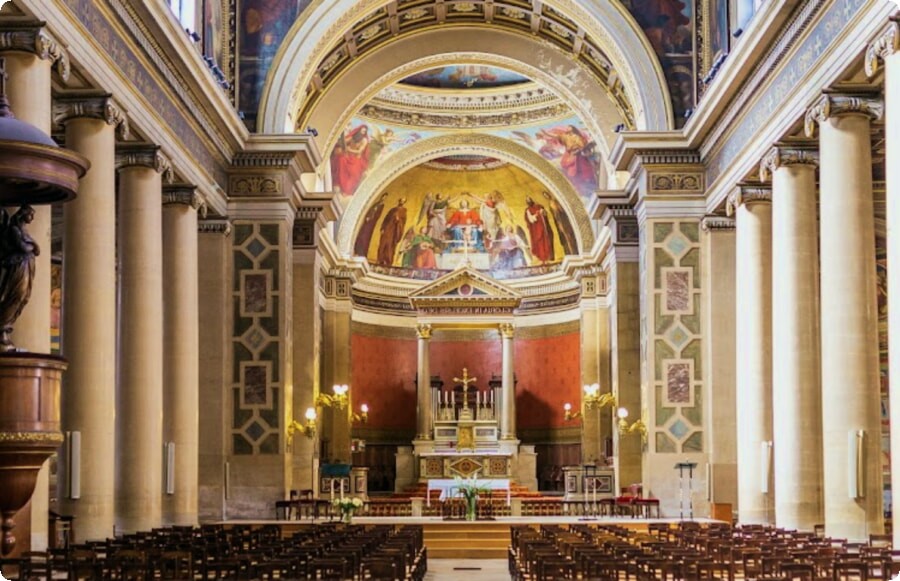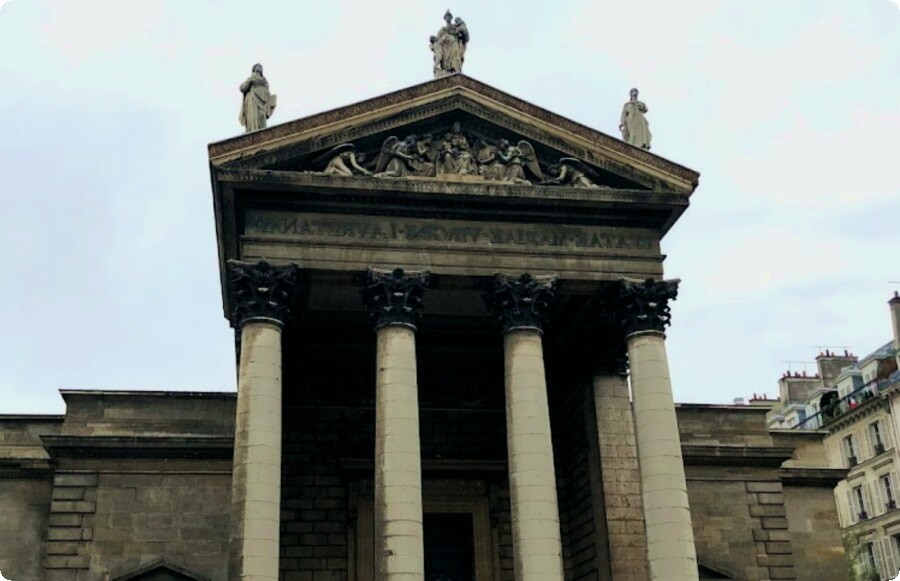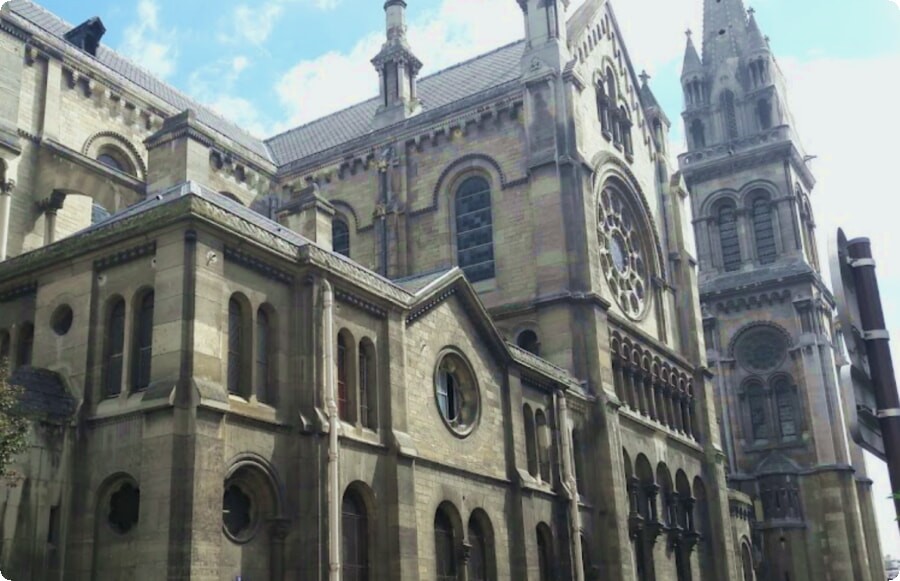The church was built in 1685-1690 according to the plans of Don Antoinade Masha. Its façade dates back to the beginning of the 18th century. The triangular pediment rests on pilasters with Doric and Ionic capitals, taken from the ancient Saint Eloi de Barnabite church, destroyed during the construction of Boulevard Palace. Cylindrical vault of the interior in the 19th century was rebuilt by Baltar. In St. Genevieve chapel (Baltar built it in 1844) there is a collection of paintings from the beginning of the 17th century depicting scenes from the Old Testament; in the right side nave. "The Adoration of the Shepherds" by J.-M. Brall; the Baroque pulpit, dating from 1749, is decorated with marquetry panels with ivory and pewter inlays.
An assistant for tourists in France is an online car booking service. In Paris, the average cost of renting a compact car will be about 20 euros per day, and in Nice it will be 18 euros per day.
In this place, in 1258, the monastery of the mendicant brothers of St. Augustine Order was founded, because of their attire they are also called Blans-Mapteaux monks-whiters; after the abolition of their order, they left this name to their successors, hermit brothers from St. Guillaume (Guillemites) order. The latter sheltered in their church the body of Louis of Orleans, who was killed on the orders of John the Fearless. In the 17th century the Benedictines from the congregation of Saint-Maure, who settled in the newly rebuilt monastery, turned it into a well-known intellectual center.
Notre-Dame-de-Lorette Church
Notre-Dame-de-Lorette Church, modeled on the church of Santa Maria Maggiore in Rome, was built between 1823 and 1836. I. Leba, to serve the New Athens quarter, which was then rapidly developing. Statues of Faith, Hope and Love crown the façade with a Corinthian portico and a sculpted pediment (“Praise of Our Lady” by Loboeuf-Nanteuil). The richly decorated interior houses many paintings, including paintings from the Chapel de Bathem (Adolf Roger, 1840) and the Chapel of Our Lady (V. Orsel and A. Perin, 1864) and works by E. Deveria, A. Venchon, A. Esse, A. Perena, Pico; the statue of John the Baptist, based on a sketch by Loeb, was sculpted by Duret. The door to the cell in which Abbé Sabatier was imprisoned during the Commune still survives. The elegant courtesans of the quarter were nicknamed "Lorettes" in the middle of the 19th century.



Saint-Ambroise Church
Saint-Ambroise Church built in 1866 by T. Ballu in a medieval style, combining Romanesque and Gothic styles. The spacious façade is flanked by two square towers crowned with octagonal spires at the base surrounded by bell towers. The portal with three round arches is crowned with a gallery framed by small arcades, a piñon with a stained-glass window rose and a triangular pediment. The interior features a vault with arrow crossings; the chapels of Saint-Augustin and Saint-Ambroise are decorated with murals recreating the life of both saints. Since the 17th century the seat was occupied by the women's congregation of the Annonsiades; the original chapel was replaced by the Church of Notre-Dame de Protection (1654-1657), which was renamed the Church of Saint-Ambroise after the sale of the property to the Annonciade congregation at the end of the 18th century. The current church was built in its place after Haussmann laid out the Boulevard Voltaire.

Saint-Christophe-de-Javel Church
Saint-Christophe-de-Javel Church built in 1926-1934. on the site of a church that had existed since 1898 but had become too cramped. Built by K. Benard from reinforced concrete, it was designed according to the classical plan. Brick facade; an openwork concrete pediment is decorated with a monumental statue of St. Christoph (works by P. Vigureux); in the interior there are large frescoes by J. Martin-Ferrier and stained-glass windows by A.-M. Manya.